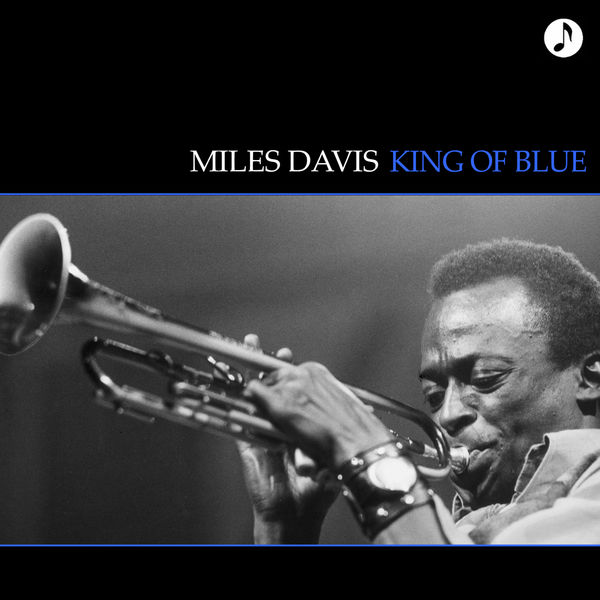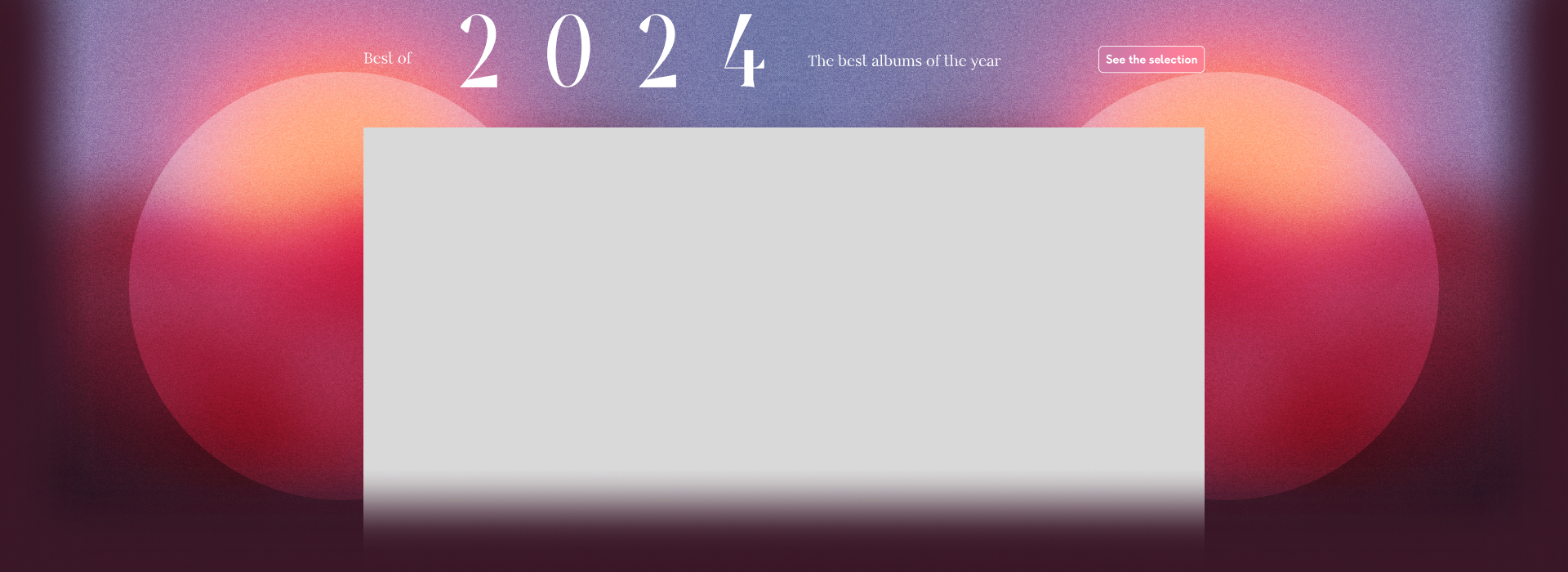
Unlimited Streaming
Listen to this album in high quality now on our apps
Start my trial period and start listening to this albumEnjoy this album on Qobuz apps with your subscription
SubscribeEnjoy this album on Qobuz apps with your subscription
Digital Download
Purchase and download this album in a wide variety of formats depending on your needs.
Sixty years after the release of Miles Davis' masterpiece, explanations for its everlasting allure and mysterious beauty remain elusive. Over the years—in books, magazines and documentary films—a parade of Miles' contemporaries have struggled to explain this 1959 album, often cited as the best-selling jazz album in history. Recorded in long, whole takes over only two sessions 51 days apart, at Columbia Records' famed 30th Street Studios, Kind of Blue is a landmark in the evolution of jazz as the first modal classic—where the improvising is based on scales rather than the dense clusters of chord changes that powered bebop. This stylish, beloved cornerstone of any jazz collection, with its relaxed tempi, rich colors and sleek silences, also possesses a timeless simplicity that continues to sound familiar and inviting.
Captured in great depth and detail by engineer Fred Plaut, brooding opener "So What," upbeat, merry "Freddie Freeloader," Bill Evans' dreamy "Blue In Green," the 6/8 double waltz "All Blues," (an aural sketch of weaving through city traffic), and the album's most purely modal number and closer "Flamenco Sketches," have all endured to become the most atmospheric, resonant and ultimately sexiest single set of recorded tunes in jazz history. Much of its undiminished magnetism comes from Miles' innate genius in building potent chemistry between musicians of contrasting styles. From the leader's icy tone to John Coltrane's muscular cascade of tenor saxophone notes, through Cannonball Adderley's soulful alto sax exuberance and pianist Bill Evans' spacious, incisive contributions, this collision of musical opposites, all driven by the underrated bassist Paul Chambers and steady drummer Jimmy Cobb, creates a mood and defines the jazz ethos of "cool" from the first dark notes of the famous opening bass line. According to Evans' original liner notes, Davis came up with these five explorations the night before the first recording session. It’s proof yet again that spontaneity and serendipity are the soul of jazz, or what Evans accurately summed up here as "collective coherent thinking" where the "direct deed is the most meaningful reflection." © Robert Baird/Qobuz
You are currently listening to samples.
Listen to over 100 million songs with an unlimited streaming plan.
From $16.65/month

Miles Davis, MainArtist
(C) 2010 Entertain Me Ltd. (P) 2010 Entertain Me Ltd.
Miles Davis, MainArtist
(C) 2010 Entertain Me Ltd. (P) 2010 Entertain Me Ltd.
Miles Davis, MainArtist
(C) 2010 Entertain Me Ltd. (P) 2010 Entertain Me Ltd.
Miles Davis, MainArtist
(C) 2010 Entertain Me Ltd. (P) 2010 Entertain Me Ltd.
Miles Davis, MainArtist
(C) 2010 Entertain Me Ltd. (P) 2010 Entertain Me Ltd.
Album review
Sixty years after the release of Miles Davis' masterpiece, explanations for its everlasting allure and mysterious beauty remain elusive. Over the years—in books, magazines and documentary films—a parade of Miles' contemporaries have struggled to explain this 1959 album, often cited as the best-selling jazz album in history. Recorded in long, whole takes over only two sessions 51 days apart, at Columbia Records' famed 30th Street Studios, Kind of Blue is a landmark in the evolution of jazz as the first modal classic—where the improvising is based on scales rather than the dense clusters of chord changes that powered bebop. This stylish, beloved cornerstone of any jazz collection, with its relaxed tempi, rich colors and sleek silences, also possesses a timeless simplicity that continues to sound familiar and inviting.
Captured in great depth and detail by engineer Fred Plaut, brooding opener "So What," upbeat, merry "Freddie Freeloader," Bill Evans' dreamy "Blue In Green," the 6/8 double waltz "All Blues," (an aural sketch of weaving through city traffic), and the album's most purely modal number and closer "Flamenco Sketches," have all endured to become the most atmospheric, resonant and ultimately sexiest single set of recorded tunes in jazz history. Much of its undiminished magnetism comes from Miles' innate genius in building potent chemistry between musicians of contrasting styles. From the leader's icy tone to John Coltrane's muscular cascade of tenor saxophone notes, through Cannonball Adderley's soulful alto sax exuberance and pianist Bill Evans' spacious, incisive contributions, this collision of musical opposites, all driven by the underrated bassist Paul Chambers and steady drummer Jimmy Cobb, creates a mood and defines the jazz ethos of "cool" from the first dark notes of the famous opening bass line. According to Evans' original liner notes, Davis came up with these five explorations the night before the first recording session. It’s proof yet again that spontaneity and serendipity are the soul of jazz, or what Evans accurately summed up here as "collective coherent thinking" where the "direct deed is the most meaningful reflection." © Robert Baird/Qobuz
About the album
- 1 disc(s) - 5 track(s)
- Total length: 00:45:47
- Main artists: Miles Davis
- Label: Red Cab Records
- Genre: Jazz
(C) 2010 Entertain Me Ltd. (P) 2010 Entertain Me Ltd.
Distinctions:
Improve album information
 Why buy on Qobuz...
Why buy on Qobuz...
-
Stream or download your music
Buy an album or an individual track. Or listen to our entire catalogue with our high-quality unlimited streaming subscriptions.
-
Zero DRM
The downloaded files belong to you, without any usage limit. You can download them as many times as you like.
-
Choose the format best suited for you
Download your purchases in a wide variety of formats (FLAC, ALAC, WAV, AIFF...) depending on your needs.
-
Listen to your purchases on our apps
Download the Qobuz apps for smartphones, tablets and computers, and listen to your purchases wherever you go.



